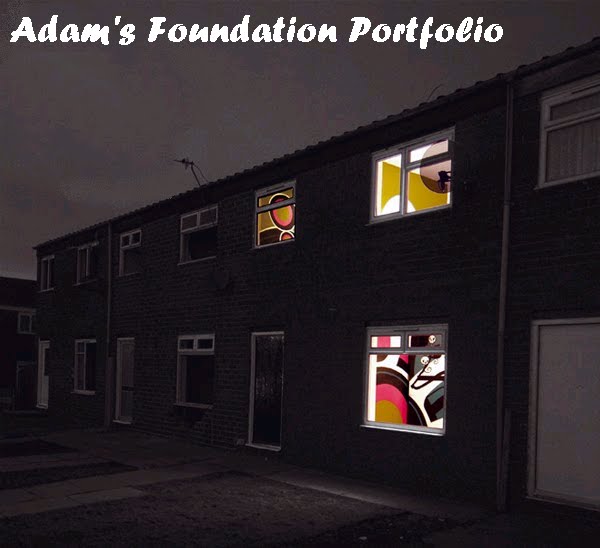four quadrant- a film which applies to most ages/ genders
niche- a market with selective people within it
35mm - 35mm reels used for films
convergance- the working together of
encryption codes- help prevent piracy
escapism- were a film allows the audience to "escape" from reality
realism- were a film ha social realism
merchandising - when a film sells products which are from the movies e.g. keyrings
streaming - through technology
above the line/ below the line- above is were you cant help see it , below the line has to be looked for
synergy- a business uses the success of another to promote itself
viral- word of mouth
product placement- a branded product is placed within a movie
vertical/horizontal integration - vertical own distribution comapny , horizontal dont
conglemarate- a institution with a large market share
DSN sites - digital screen network , alternative to 35 mm reels
distribution - when a film is distributed to a distirubter
exhibition- were a film is shown e.g. leicester square
Lord Puttnam- the theory of star persona not mattering
Shane Meodows- uses pre-fabricated sets aswell as cutting down on costs
Wednesday 12 May 2010
Wednesday 28 April 2010
Monarch of The Glen Key Words
Key words from Monarch Of The Glen
Stereotypical representation
establishing shot
long shot
high/low angle
middle aged
young
old teenager
childish
father figure
binary opposite
enigma
country style clothing
superiority
Stereotypical representation
establishing shot
long shot
high/low angle
middle aged
young
old teenager
childish
father figure
binary opposite
enigma
country style clothing
superiority
Sunday 25 April 2010
How is the representation of disability constructed in this extract?
The idea of disability in this extract is constructed in such a way as to elicit a certain degree of sympathy from the audience. However, it is not as simple as presenting the main character as extremely vulnerable, as is often the case when disabilities are stereotyped. Instead, empathy is elicited by displaying a normal working-class bloke, one which a vast majority of people would be able to relate to. He talks normally, using oft-heard midlands accents, proverbs and colloquialisms, such as 'hoping i could have me old job back and that'. At the beginning he acts as if nothing had happened, although his friend was giving him dodgy looks. This again highlights his normality - giving the audience the feel that he could be one of us. The clip begins by emphasising the effects of his new disability, the difference between past and present - the past being when he had his job before and the present when he tries to get his job back.
Thursday 22 April 2010
Cameras n HD
Theres a big difference between using 16mm and HD. For the purposes of making a movie, even 16mm film has better 'resolution' than all but the most expensive HD cameras. When it comes to rental costs, HD equipment (especially the decks) can be a lot more expensive than film equipment. But tapes (or hard drives) are cheaper than film (purchase and developing costs). You have to weigh the expense of developing film against how much footage you plan to shoot. If you want to end up with a film print that can be projected (there are still too few digital projectors out there, although a lot of major festivals now have at least one), you'll have to pay an expensive blow-up cost to transfer your final digital cut to film. In most cases, it won't look as nice as it would if you'd shot on film in the first place. Some movies shoot on film and finish to HD. But assuming that you only want to sell your movie to the HD TV channels and sell on DVD and the Blu-Ray, HD is beginning to make good business sense. It takes a rare filmmaker to give up on seeing his or her masterpiece on film. But when a theatrical release isn't in the cards, HD is the optimum choice.
Because it's so expensive, movies like Dead Man's Shoes will not use HD as they work on a lower budget and the benefits will be low.
High End Camera equipment - RED one is aimed to be a highly-flexible camera thats capable of high end imaging.
Because it's so expensive, movies like Dead Man's Shoes will not use HD as they work on a lower budget and the benefits will be low.
High End Camera equipment - RED one is aimed to be a highly-flexible camera thats capable of high end imaging.
Friday 16 April 2010
What kind of media institution might distribute your media product and why?
My film is a thriller, which is aimed at a broad age range of males, mainly aimed towards the rural working-class but includes flashbacks of children and snapshots of everyday British life, which will also appeal to females. Mine is an independent film, which by definition means that less than half of the budget is paid for by major film companies.
Being an independent film we would begin by filming the sequence and some footage with a very home-made feel to it. We would then appeal to the UK film council for funding or grants, as well as appealing to the government for use of tax breaks such as s. 42 and s.48, which have the power to write off production costs to films with a budget of under 15,000, or to postpone the payment for 3 years for films of any budget respectively. Other funding might be found by appealing to the City of London for Equity investment or searching around for Gap financing and Below-the-line investment , for example from other countries.
My company is an independent film company – Shotgun Films, and through this I would try to keep the process vertically integrated, which is the practice of keeping the production, distribution and marketing within the one company as much as possible. Independent films have become much more popular over the last ten/fifteen years in the postmodern era, and so the fresh interest will hopefully sell films. However, if i was to use another company to distribute my film i might make a deal with a company such as Palisades Tartan, who have a reputation of producing and distributing thrillers and horrors.
A large part of my marketing and distributing will be about networking, building a viral buzz to sell the film. The film will utilise the internet as much as possible, in a way similar to Paranormal Activity – it will begin with creating websites, and using social networking sites such as Myspace and Facebook to increase awareness and create enigma.
Thursday 15 April 2010
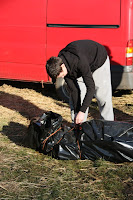

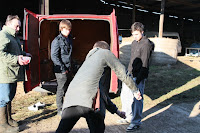
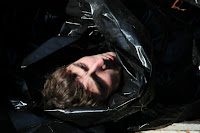
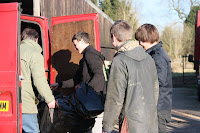
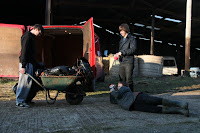
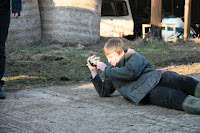
These are some of the shots i took of us filming. It was good fun, and i learnt a lot about how to use a camera as well as a tripod. I learnt how to shift the focus in and out, how to manipulate tapes to find the right place to film, how to find good angles to film from, as well as how to be strict on keeping things in continuity. All these very fine details may seem insignificant but are actually the most important, these are the difference between a pleasing film and a shoddy film.
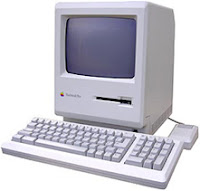
We used the iMovie program on Apple Macs to create our movies.
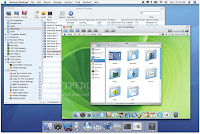
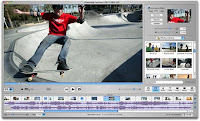
Looking back at your preliminary task (the continuity editing task), what do you feel you have learnt in the progression from it to full product?
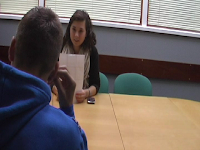
This simple shot-reverse-shot isn't the most effective - we cannot see Giorgio's expression as he puts his earphone in, and the shot is almost too long to retain interest.

Again, a very simple shot showing what Nicky is writing, the camera zooms in a little too far as well - these are important details that would be edited out in a professional film.
Simple long shots for the beginning, as well as a match-on-action when Giorgio opens the door, simple high-angle tilting shot to give the impression of a greater intelligence looking down on them. We have a simple shot-reverse-shot then, before a basic high-angle shot zooming into Nicky's writing. We kept to the 180 degrees rule by not filming from the other side of Giorgio and Nicky in the shot-reverse-shot.
My final movie, however, utilises a variety of shots. The sequence begins with an extreme long shot, cuts to a close-up over the shoulder, displaying a low-angle shot, before showing a panning shot of the sky. Already, i have four kinds of shot that i didn't use in the prelim. I have tried to include a variety of angles, so we have a couple of high-angle shots, as well as some floor shots -
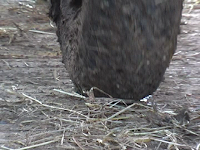
I have also included effects for good measure, such as the black and white film effect.
Subscribe to:
Posts (Atom)
